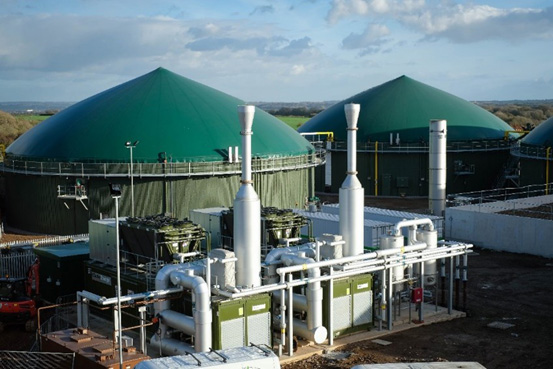Anaerobic digestion (AD) is a natural biological process that occurs in the absence of oxygen, where microorganisms break down organic matter such as food waste, agricultural residues, and sewage. The process involves multiple stages, each driven by different microbial communities, and results in the production of biogas (mainly methane, CH₄, and carbon dioxide, CO₂) and a nutrient-rich byproduct called digestate. The overall chemical reaction for anaerobic digestion can be simplified as follows:

The AD process occurs in four main stages:
- Hydrolysis: Large organic molecules such as carbohydrates, proteins, and fats are broken down into simpler soluble compounds like sugars, amino acids, and fatty acids by hydrolytic bacteria.
- Acidogenesis: These simple compounds are further converted into volatile fatty acids, alcohols, hydrogen, and carbon dioxide by acidogenic bacteria.
- Acetogenesis: In this stage, volatile fatty acids and alcohols are converted into acetic acid, hydrogen, and carbon dioxide by acetogenic bacteria.
- Methanogenesis: Finally, methanogenic archaea convert acetic acid, hydrogen, and carbon dioxide into methane (CH₄) and carbon dioxide, the primary components of biogas. Methanogenesis is the crucial step for biogas production, making AD an important process for renewable energy

AD and Bioplastics
While AD is highly effective for treating organic waste, the role of bioplastics in this process is more complex. Bioplastics, especially biodegradable ones, are designed to decompose under specific conditions, such as aerobic composting or anaerobic digestion. However, not all bioplastics degrade efficiently in anaerobic environments, depending on their chemical structure and composition. Some bioplastics may require higher temperatures (thermophilic conditions) or extended retention times to break down. Research is still ongoing to understand how different types of bioplastics behave during AD, their impact on biogas production, and whether they could hinder or enhance the efficiency of the process. Successfully integrating bioplastics into AD systems could present an innovative solution for waste management and renewable energy generation, but more studies are needed to ensure compatibility and sustainability.


